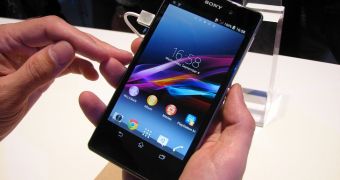Sony Mobile’s Xperia handsets are now capable of providing customers with a complete business platform, the handset vendor announced.
The company has already made a series of enhancements to the Android platform so as to ensure that business customers can enjoy a stable and secure platform for their communications.
Furthermore, Sony Mobile announced the Xperia in Business web portal, which was launched alongside the new Xperia Z1, while also detailing the enhanced capabilities of the device.
“The developments we’ve made in security can be categorized into four areas; System Security, Secure Storage, Network Security and Device Security,” the company notes in a blog post.
Sony explains that it has managed to improve the existing level of security delivered through the Android Application Sandbox, so as to ensure the isolation of app data and code from other apps.
Thus, applications cannot interact with other software on an Xperia device, and also enjoy limited access to the operating system, which means that protection of sensitive information has been enhanced.
The company further focused on offering secure storage on its device, through encryption capabilities, which means that data remains unreadable for third parties.
“The Xperia Z1 offers 256-bit AES encryption for all the data in the internal memory and also on the external SD card. This guarantees strong protection, and if the device we’re lost or stolen it could be remotely locked or wiped,” the company notes.
Additionally, Sony ensured that the handset’s connections are secured too, through a Secure Socket Layer (SSL) 2.0 and 3.0, and Transport Layer Security (TLS v.10, v1.1 andv1.2). The handset also offers support for StartTLS with IMAP/POP3 accounts.
The security of the device has been improved as well, beyond the screen lock combined with a passcode. The phone is compatible with leading MDM providers, so that policies could be enforced OTA via MDM solutions or through Microsoft Exchange ActiveSync.

 14 DAY TRIAL //
14 DAY TRIAL //